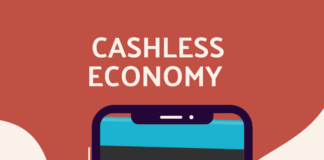In an unexpected turn of events, OpenAI, the revered tech giant at the forefront of artificial intelligence (AI) development, faced a tumultuous week marked by the abrupt removal and subsequent reinstatement of its CEO, Sam Altman. The saga unfolded against the backdrop of internal dissent, board reshuffling, and the looming possibility of OpenAI’s $80 billion empire collapsing. This article delves into the intricacies of the OpenAI controversy, exploring the enigmatic reasons behind Altman’s dismissal, the subsequent power struggles, and the implications for the field of AI safety.
I. The Unprecedented Shake-Up
A. A Whirlwind Week
OpenAI, renowned for its pioneering work in generative AI and the creation of ChatGPT, found itself at the center of a maelstrom on November 17. The company’s board announced the termination of CEO Sam Altman, triggering a cascade of events that included employee unrest, board upheaval, and the threat of mass resignations.
B. The Cryptic Termination
The decision to remove Altman was shrouded in mystery, with the board citing a lack of trust and communication issues. The abrupt move raised questions about the internal dynamics and strategic vision misalignment between Altman and the board.
II. The Enigma of Sam Altman
A. Altman’s Meteoric Rise
Sam Altman’s ascent to prominence in the tech industry was catalyzed by his role as the CEO of Y Combinator, a highly esteemed startup accelerator. His leadership at Y Combinator, known for nurturing and propelling early-stage startups to success, established Altman as a key figure in Silicon Valley. The reputation he garnered during this period laid the foundation for his subsequent ventures, including his pivotal role as a co-founder of OpenAI.
Altman’s involvement in Y Combinator provided him with a platform to understand the dynamics of emerging technologies and their potential impact on the industry. This experience equipped him with insights that would later shape OpenAI’s trajectory and strategic direction.
B. The Face of AI
As Altman transitioned from Y Combinator to co-founding OpenAI, he strategically positioned himself as a charismatic ambassador for the burgeoning AI revolution. His proactive engagement on the global stage, interacting with world leaders and contributing to regulatory discussions, underscored his commitment to shaping the ethical landscape of AI development.
One notable aspect of Altman’s persona was his candid acknowledgment of the potential dangers associated with AI. Unlike many CEOs who might downplay risks, Altman openly addressed the transformative and, at times, precarious nature of artificial intelligence. This transparency endeared him to those who sought ethical considerations in the rapid evolution of AI technologies.
However, Altman’s journey at the helm of OpenAI was not without controversy. The company’s swift transition from a nonprofit model to a for-profit entity under his leadership raised eyebrows within the tech community. This transformation, driven by financial considerations and the pursuit of market dominance, led to concerns about the balance between profit motives and the ethical responsibility associated with AI development.
Altman’s dual role as a visionary advocate for AI regulation and the leader of a company navigating the competitive landscape underscored the complexities inherent in managing the intersection of innovation, profit, and responsible technology development. The controversies surrounding his management style and strategic decisions added layers to the enigma of Sam Altman, leaving observers to ponder the intricacies of leadership in the rapidly evolving field of artificial intelligence.
III. OpenAI’s Unique Trajectory
A. A Nonprofit Turned For-Profit
Founded in 2015 as a nonprofit entity, OpenAI underwent a transformation under Altman’s leadership in 2019. Introducing a “capped profit” arm, the company attracted substantial investments, including $13 billion from Microsoft, solidifying its for-profit stance while ostensibly retaining a nonprofit mission.
B. Unprecedented Valuation
OpenAI’s valuation skyrocketed, fueled by the success of ChatGPT and strategic partnerships. The company’s pivotal role in the AI landscape made it a critical player, prompting Microsoft’s substantial investments and securing its position as a tech industry leader.
IV. Boardroom Drama and Microsoft’s Intervention
A. Altman’s Dismissal and Employee Backlash
The board’s decision to remove Altman triggered a strong backlash from OpenAI employees, including threats of mass resignations. The ensuing chaos saw Mira Murati initially appointed as interim CEO, a move met with dissatisfaction and skepticism.
B. Microsoft’s Stakes
As Microsoft, a major investor in OpenAI, closely monitored the unfolding drama, CEO Satya Nadella publicly expressed confidence in OpenAI while announcing the formation of a new AI research team led by Altman. Microsoft’s intervention underscored its commitment to OpenAI’s success.
V. Altman’s Return and Board Restructuring
A. The Reinstatement
In a surprising turn, negotiations between Altman and the board led to his reinstatement as OpenAI’s CEO. The former board underwent a significant overhaul, with Bret Taylor appointed as chair and Larry Summers joining, signaling a shift in leadership and strategic direction.
B. Unanswered Questions
Despite Altman’s return, critical questions remain unanswered. The vague nature of his dismissal, coupled with reported conflicts over AI safety, adds an air of uncertainty to OpenAI’s future endeavors. An independent investigation into Altman’s actions has been announced, suggesting that the turmoil may have deeper implications.
VI. Implications for AI Safety
A. The Unsettled Landscape
The OpenAI saga raises concerns about the safety and responsibility associated with AI development. The ambiguity surrounding Altman’s removal and the subsequent restructuring of the board underscore the challenges of aligning profit-driven objectives with the ethical imperatives of AI safety.
B. Beyond OpenAI
As governments worldwide grapple with AI regulation, the OpenAI controversy serves as a stark reminder that AI safety cannot solely rely on the intentions of individual leaders. The potential impact of generative AI models extends beyond OpenAI, with industry giants like Google and Meta also actively pursuing similar technologies.
VII. Conclusion: Navigating the Future of OpenAI
In the aftermath of a week marked by chaos and uncertainty, OpenAI stands at a crossroads. Altman’s reinstatement and the reshaped board herald a new chapter for the company, with questions lingering about its commitment to AI safety, transparency, and responsible development. The broader implications for the AI industry and the role of influential leaders in shaping its trajectory remain subjects of intense scrutiny.









